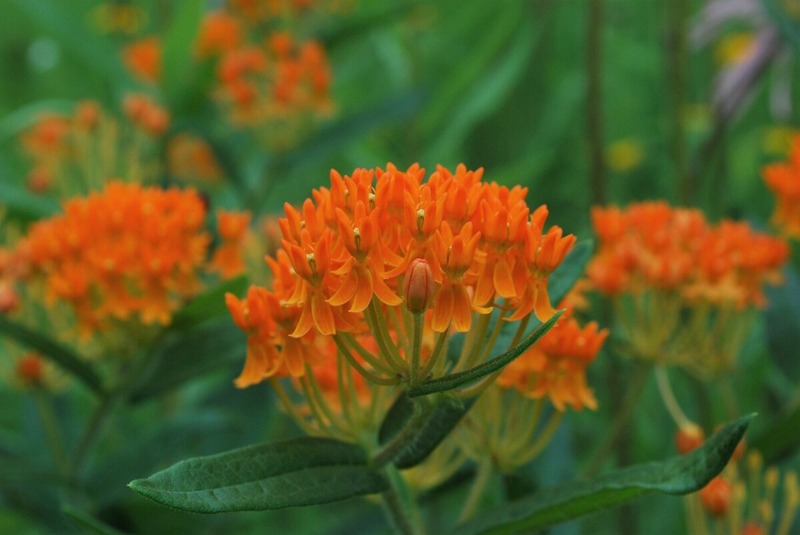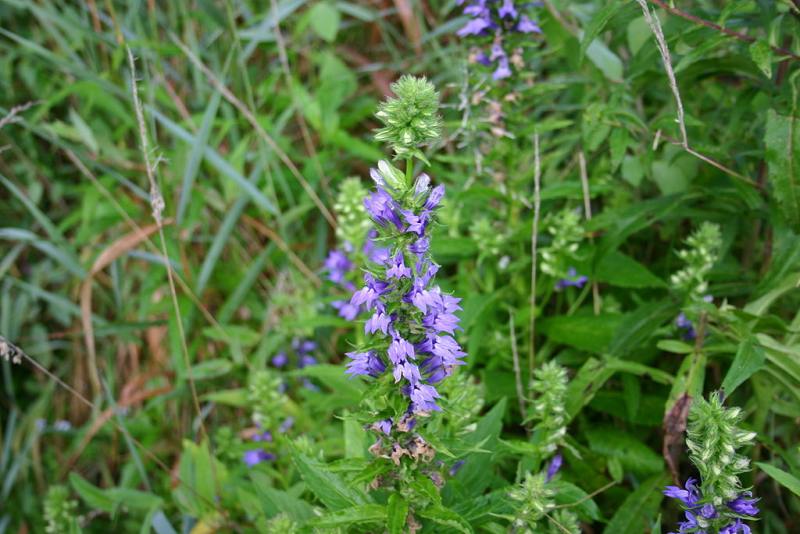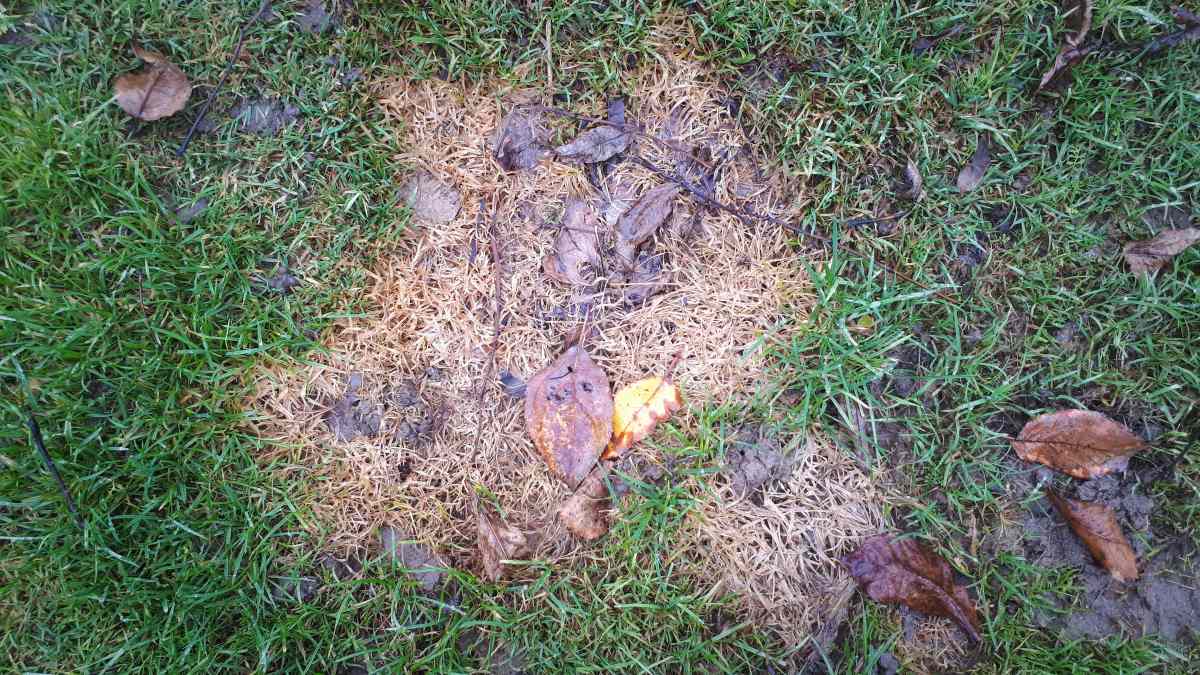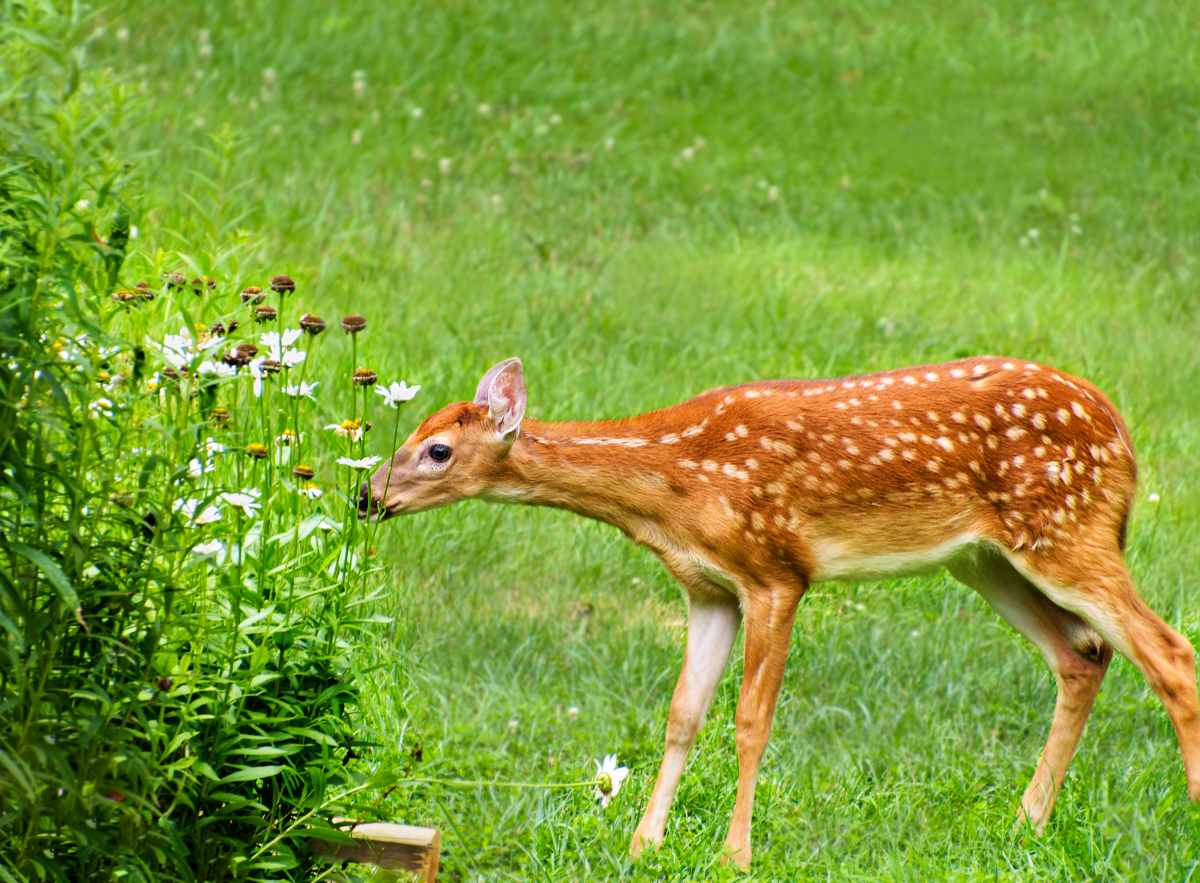
You can’t have a drab landscape when you live in Jersey. It’s the GARDEN STATE, for crying out loud! But living up to our state’s lofty reputation isn’t that difficult with great New Jersey perennials like American bellflower, black-eye Susan, and purple coneflower, along with some basic gardening knowledge.
So let’s take a look at 10 perennials that add color and texture to your landscape and return year after year with dazzling effect.
- Factors to Consider
- 1. American Bellflower (Campanula americana)
- 2. Black-Eyed Susan (Rudbeckia hirta)
- 3. Butterfly Milkweed (Asclepias tuberosa)
- 4. Tall Larkspur (Delphinium exaltatum)
- 5. Great Blue Lobelia (Lobelia siphilitica)
- 6. Oriental Poppy (Papaver orientale)
- 7. Purple Coneflower (Echinacea purpurea)
- 8. Rose Mallow (Hibiscus lasiocarpos)
- 9. Russian Sage (Perovskia atriplicifolia)
- 10. Common Blue Violet (Viola sororia)
- Frequently Asked Questions
- Get Growing
Factors to Consider
Every perennial isn’t built for every environment. Like any plant, a perennial thrives only if it’s adapted for a particular climate. So in making our choices, we considered New Jersey’s climate and selected plants that not only look great but that also handle our rainfall and soils and perform like champs through our seasonal highs and lows.
For example, New Jersey is in USDA Hardiness Zones 6 and 7, meaning your perennials must be able to withstand lows between -10 and 10°F.
1. American Bellflower (Campanula americana)

You can recognize the American bellflower by its showy, lavender-blue flowers, each with a white ring in the center. It readily reseeds in the garden and helps other plants naturalize (become established as if they grow natively).
Fun fact: American bellflower is a pollinator magnet. Bees, wasps, butterflies, and hummingbirds come and search for nectar and pollen.
- Sun: Full sun or partial shade
- Soil: Sandy, loamy, organically rich, moist, neutral
- Bloom time: June to September
- Water needs: Medium
- Mature height: 3 to 6 feet
- Maintenance: Low
2. Black-Eyed Susan (Rudbeckia hirta)

From June to September, Black-Eyed Susan sprouts yellow-orange daisy-like flowers with a dark brown center. It self-seeds freely and grows aggressively – so much so that it needs other plants to keep it from getting out of control. Butterflies love these flowers, as they give them a sturdy place to land.
Black-Eyed Susan doesn’t like prolonged, wet weather, but it’s hardy and handles drought to an extent. If you’re making bouquets, Black-Eyed Susans are great as fresh-cut flowers. They thrive in New Jersey’s summers and add a burst of color to gardens. And we love that they thrive in all kinds of soil and will even do well in the sandy soils near the Jersey Shore.
- Sun: Full sun
- Soil: Clay, sand, loam, acidic, moist, well-drained
- Fragrance: Sweet
- Bloom time: Spring, summer, early autumn
- Water needs: Medium.
- Mature height: 1 to 3 feet.
- Maintenance: Low.
3. Butterfly Milkweed (Asclepias tuberosa)

Butterfly milkweed’s bright orange flowers embody late summer vibes here in New Jersey. Butterflies, bees, and hummingbirds love the nectar from these flowers. Unlike other milkweeds, butterfly milkweed doesn’t contain a milky sap.
- Fun fact: Butterfly milkweed was selected as the 1985 North Carolina Wildflower of the Year.
- Sun: Full sun to partial shade
- Soil: Sandy, acidic, slightly acidic
- Bloom time: May – September
- Water needs: Low
- Mature height: 1 to 2 feet
- Maintenance: Low
4. Tall Larkspur (Delphinium exaltatum)

If you want to add a splash of blue to your garden, plant tall larkspur in your Jersey landscape. It produces a large, coarse, leafy stem featuring clusters of blue, purple, and sometimes white flowers. Birds, bees, and hummingbirds love them, and deer don’t like them.
- Sun: Full sun to partial shade
- Soil: Rich, good drainage
- Bloom time: June to September
- Water needs: Low
- Mature height: 4 to 6 feet
- Maintenance: Medium
5. Great Blue Lobelia (Lobelia siphilitica)

Also known as the “blue cardinal flower,” Great Blue Lobelia sprouts purple-blue tubular flowers. The striking blue color and beautiful arrangement of flowers on tall spikes attract pollinators and serve as a food source for bees, butterflies, and hummingbirds. It may self-seed in optimum growing conditions, forming attractive colonies.
Great Blue Lobelia needs constant moisture and usually appreciates partial shade. However, it can tolerate full sun in cooler northern climates but in New Jersey’s hot and humid summers, they’re good with partial shade.
- Sun: Full sun or partial shade
- Soil: Sandy, loamy, clay
- Bloom time: July to September
- Water needs: Medium to high
- Mature height: 2 to 3 feet.
- Maintenance: Low
6. Oriental Poppy (Papaver orientale)

If blue doesn’t appeal to you, what about bolder colors like orange and red? Oriental Poppy boasts large red, orange, white, or pink flowers with black centers. After their summer show, basal leaves take over in the fall and winter months until spring when they grow vertically.
Oriental Poppies need well-drained garden soils to grow their best because they’re susceptible to root rot if the soil is poorly drained. Placing them near plants that fill in after they die is recommended.
- Sun: Full sun
- Soil: Loam, sand, dry
- Bloom time: June and July
- Water needs: Low
- Mature height: 2 to 3 feet
- Maintenance: Medium
7. Purple Coneflower (Echinacea purpurea)

Purple coneflower is a versatile native perennial that thrives in various soil types and adapts well to a range of growing conditions, making it a popular choice for New Jersey gardens. It produces pinkish-purple flowers with brown centers from summer to fall. Pollinators like bees, butterflies, and songbirds are all fond of them.
Purple coneflowers are often assembled with black-eyed Susans and make great fresh-cut flowers for a bouquet.
- Sun: Full sun, partial shade
- Soil: Sandy, clay, loam, rocky
- Bloom time: June to September
- Water needs: Medium
- Mature height: 2 to 5 feet
- Maintenance: Low
8. Rose Mallow (Hibiscus lasiocarpos)

Also known as the “hairy-fruited hibiscus,” rose mallow distinguishes itself with its large, showy white flowers that open for just a single day. It gets its name from its hairy leaves, stems, and fruit capsules. It attracts butterflies and is also deer-resistant, making it a good choice for New Jersey landscapes since we have an impressive deer population (check out deer-resistant plants for Newark and the rest of New Jersey).
Rose mallow needs lots of moisture throughout the growing season. It works great as a large plant in the back of a garden, patio area, or courtyard.
- Sun: Full sun, light shade
- Soil: Wet
- Bloom time: July to September
- Water needs: Medium
- Mature height: 3 to 5 feet
9. Russian Sage (Perovskia atriplicifolia)

Russian sage is valued for its tiny, purple-blue, tubular flowers arranged along the stems. It superficially resembles lavender and can be grown in parts of New Jersey that are too cold to grow real lavender. It combines well with native and ornamental grasses and white or yellow perennial flowers.
This herbaceous perennial will freshen up your New Jersey landscape with its aromatic foliage and invite lots of beautiful butterflies, bees, and other pollinators.
Fun fact: Researchers are studying Russian sage to see if it can be used in drugs to counter dementias like Alzheimer’s.
- Sun: Full sun
- Soil: Average, dry to medium, well-drained
- Bloom time: July to October
- Water needs: Low to medium
- Mature height: 3 to 5 feet
- Maintenance: Low
10. Common Blue Violet (Viola sororia)

Common blue violet has showy flowers leading to it being named the state flower for New Jersey. Its green, heart-shaped leaves and delicate blue-purple flowers bloom in early spring. This edible flower can be used raw in salads or cooked for jellies and candies.
Common blue violet produces nectar that attracts both butterflies and bees. It can be planted in clumps along borders or used as a ground cover. Since it’s a low-growing perennial, it may sometimes be challenged by aggressive weeds common here.
- Sun: Full sun, partial shade
- Soil: Average, medium, well-drained
- Bloom time: April to August
- Water needs: Medium
- Mature height: 0.5 to 0.75 feet
- Maintenance: Medium
Frequently Asked Questions
How are perennials different from annuals?
Annual plants live for one growing season, then die off. Perennials, however, live for more than one growing season. Perennials go dormant in the winter and return the following year.
When should I start planting perennials on my New Jersey lawn?
Plant once there’s no danger of a frost, as frost will kill tender plants, as a part of your spring lawn care checklist.
What are some drawbacks to planting perennials?
They take longer, possibly years, to fully bloom. They can also be susceptible to disease and require more space than annuals.
Get Growing
There’s no single perennial that fits every landscape. Understanding your perennial plant’s needs and growing conditions will help turn your New Jersey landscape from ordinary to extraordinary.
Need a hand? talk to a New Jersey landscaping expert if you need help selecting plants for your landscape. Whether you’re in Howell, Englishtown, Jersey City – or anywhere else in the great state of New Jersey – LawnStarter can connect you with passionate lawn care and landscaping pros with helpful advice.
Main Photo Credit: Pixabay




